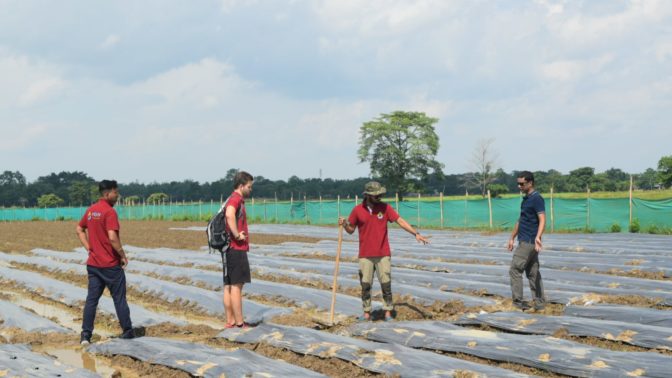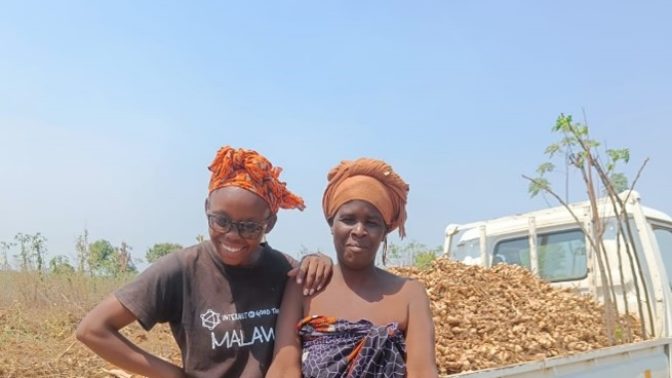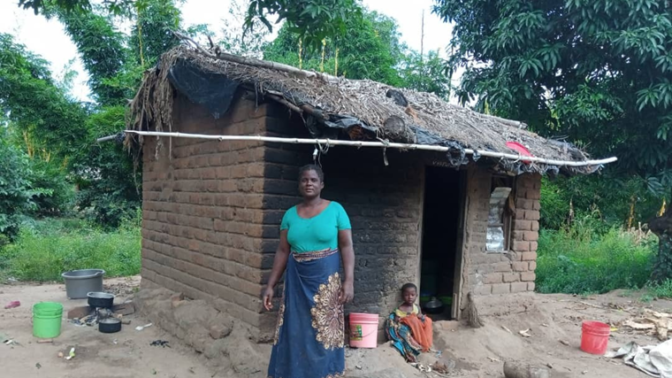aQysta brings growth to smallholder farmers with new business model
Smallholder farmers worldwide are some of the most hard-working entrepreneurs around. Yet, many have and continue to struggle with basic servicing issues like irrigation. In this blog post, we speak with Pratap Thapa, Co-founder and CEO of aQysta, to learn more about the organization’s new business model – Grown Farm Incubator – and how it has already begun to support smallholder farmers in Malawi, Nepal, and India.

Pratap, your upbringing in Nepal and education in the Netherlands led you and your team to the development of the Barsha Pump. How does your renewable irrigation pump continue to benefit farmers and families around the world?
I come from a smallholder farming family, and grew up working on the farm helping my parents. This provided me with insight into the challenges of smallholder farming, with one of the major ones being the challenge to water (irrigate) the farm. When I received a scholarship to do a masters program at the Technical University of Delft in the Netherlands, together with aQysta’s co-founders, Fred Henny and Lennart Budelmann, we started working on a technology solution specifically targeting water problems faced by my parents and other smallholder farmers. Together, we developed the Barsha Pump, a renewable irrigation pump that uses the power of flowing water sources (like rivers) to lift water to farmlands without any fuel or electricity.
Today, more than 7,000 smallholder farmers in 27 countries are using and benefitting from the Barsha Pump. Eighty percent of the farmers who use the pump did not have another means to irrigate their farms in the dry season. The pump allows farmers to farm throughout the year, increasing their yield and income.

In 2021, aQysta’s business model went through a transformation with the launch of the Grown Farm Incubator business model. Can you explain the mission you set out to achieve with this business model and what initial successes have been seen?
Having worked with smallholder farmers for more than eight years providing irrigation technology, we felt that we could and should create a deeper impact in the lives of smallholder farmers. While access to irrigation water is essential to increasing farmers’ productivity, we saw that many farmers still generate insufficient income to sustain themselves and their families. Farmers need proper training, quality farming input (like seeds and fertilizers), and a market where they can receive a fair price for their products to further increase their productivity and profitability.
Knowing that, we started the Grown Farm Incubator to provide a complete package of solutions to farmers, from water to market and anything in between to make them profitable and climate resilient. Through the Grown Farm Incubator model, we partner with farmers on a profit-sharing model so that farmers do not need to pay upfront for the technology or service. This was the biggest thing for us to validate about the model – that farmers are willing to work on a profit-sharing model with us. We have seen a good response and enthusiasm from farmers. So far, we on-boarded farmers in Malawi, Nepal, and India, and in all three regions we are now running the second season of farming. We have seen farmers earn up to eight times more from farming than they did before participating in the Grown Farm Incubator.
Can you elaborate on how farmers benefit from your Grown Farm Incubator business model?
Through the Grown Farm Incubator model, farmers do not have to pay upfront for the products or services. Farmers share a percentage of the gross margin earned from the sales of harvest with aQysta. The exact percentage share between aQysta and farmers depends on the service package farmers choose. Farmers can choose from three service packages – Incubation Premium, Incubation Standard, and Graduate Package.
It is a value-sharing business model. Farmers only have to pay for the products or services proportional to the value it creates for them, and there is no fixed fee to pay. In addition, the incubation premium package offers advance payment on harvest to farmers, so that they can manage their cash flow. Farmers can keep this advance payment even if they lose the harvest to extreme climate events, which occurs more frequently with the changing climate.
In this way, aQysta has skin in the game and shares the harvest risk with farmers. Trust is an important factor in working with smallholder farmers. Having skin in the game, and sharing risks and benefits with farmers, helps build this trust and more farmers can be on-boarded and retained.
Overall, the primary benefit for farmers is the increase in income they can experience by collaborating with aQysta. In addition to the economic benefit, aQysta also trains farmers on regenerative agriculture practices, which helps them build healthy soils and be more resilient to changing climate.

To help illustrate what this looks like, can you share one of your farming partner’s first-hand experiences?
One of the farmers we work with is Rebecca Chirombo in Malawi. Rebecca, a single mother with three children has 0.4 acres of land that she can farm on. She did not have irrigation access, so she only farmed maize during the rainy season. During the dry season she did not farm at all. To earn money to be able to send her kids to school, she used to sell home-made alcohol in the village.
After starting to work with the Grown Farm Incubator program with aQysta, Rebecca can farm all year round and earns enough income from farming to be able to send her kids to school. Her next dream is to replace her home’s grass roof with a tin roof.

What are aQysta’s future plans/goals for this new business model?
We want to expand the Grown Farm Incubator model in Nepal, Northeast India, and Malawi. We aim to grow more into sustainable farming practices and are closing an investment round to expand the model further. Furthermore, we are forming partnerships to be able to export the smallholder farmers’ produce in Europe. The team will continue to develop irrigation technologies and plans to develop more innovative technologies for smallholder farmers.